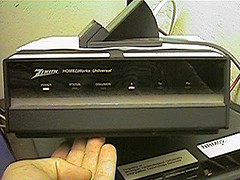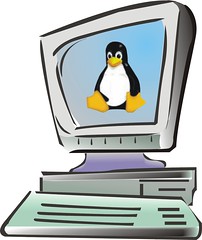
- Image via CrunchBase
Recently, we commented that one of our top issues with Hulu was aggregation. The website, as well as other video websites are not easy to navigate for someone sitting on their couch, or to control once the video starts Playing.
We know how to hook a remote control up to a computer and to program the computer to Play/Pause etc when the appropriate button is pressed.
But Hulu, even though it does respond to Hotkeys…
- F for FullScreen On/Off toggle
- Space Bar for Play/Pause
It does not integrate well with remotes, mostly because you need the Hulu player to have focus in order for it to respond to these keys, and it often does not, so ones commands are sent to the browser, instead of the Hulu player.
Then, on December 30th, we checked out Woot, the one deal a day site, and saw this…Woot was selling a two-pack of Gyration Gyroscopic Media Center Mouse/Remotes inexpensively.
We ordered a pack of them. But the idea hit us. The Gyration is designed for presentations. There are a variety of presentation mice, designed for giving Powerpoint Presentations and such, that could be used in lieu of a remote, until someone figures out a way to make Hulu more remote friendly.
This seemed like a simple and easy device to add to our arsenal. There is also software that will have your remote control emulate a mouse, however, from our experiments, it is hard to navigate with any precision using them.
We’ll advise how the presentation remote works out for us as a tool, and continue our experiments to figure out how to give Hulu focus automatically so the keyboard hotkeys will work. If they work, they can be linked to a remote control.


![Reblog this post [with Zemanta]](http://img.zemanta.com/reblog_e.png?x-id=7d011506-3f4a-4ec1-94f3-7c73004de1a9)

![Reblog this post [with Zemanta]](http://img.zemanta.com/reblog_e.png?x-id=b992a727-5651-42e0-ab2a-f576f94a55c1)


![Reblog this post [with Zemanta]](http://img.zemanta.com/reblog_e.png?x-id=84cfe6b5-8cc4-499c-81a0-d283def901c8)


![Reblog this post [with Zemanta]](http://img.zemanta.com/reblog_e.png?x-id=d4507010-751a-4f7a-99a0-650ac4ddb9cc)
![Reblog this post [with Zemanta]](http://img.zemanta.com/reblog_e.png?x-id=8f20092c-9f6a-451f-ab49-8a994319f8eb)
![Reblog this post [with Zemanta]](http://img.zemanta.com/reblog_e.png?x-id=e5aa2daa-7163-4242-aded-df6aa33ad42d)
![Reblog this post [with Zemanta]](http://img.zemanta.com/reblog_e.png?x-id=d7af3e92-2103-4aeb-b3db-b7d4b3a8db12)


![Reblog this post [with Zemanta]](http://img.zemanta.com/reblog_e.png?x-id=6d31f1dd-9f70-4455-9957-6ff2172b99c1)
![Reblog this post [with Zemanta]](http://img.zemanta.com/reblog_e.png?x-id=6a7f8808-a4c1-4a8e-9b2e-217de55c7ac2)